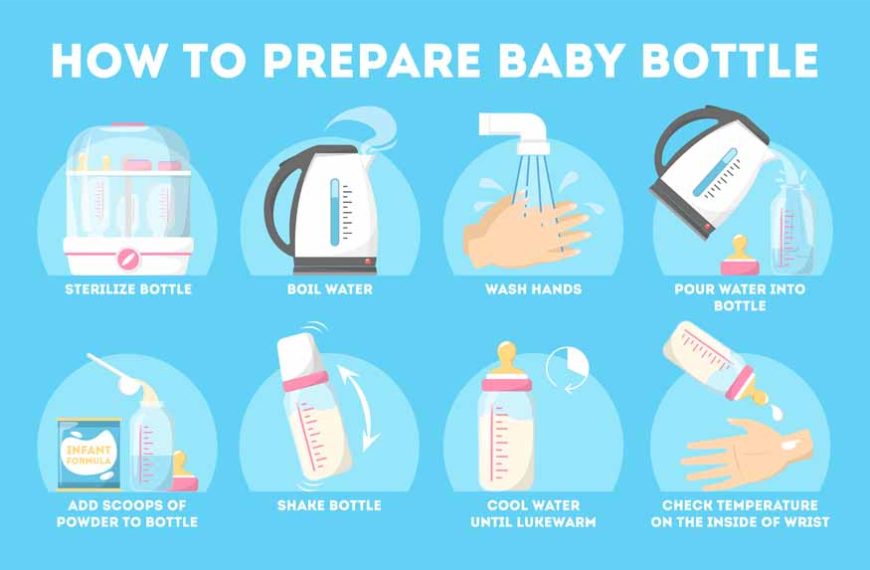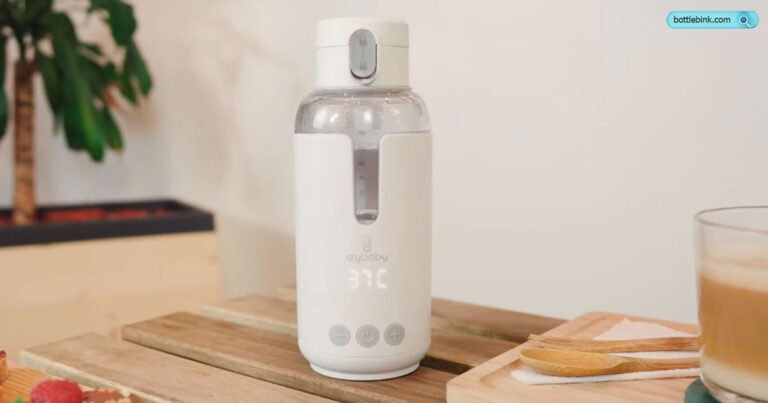How Often Should You Sterilize Baby Bottles? Essential Guide
You want the best for your baby, and keeping their feeding bottles clean is a big part of that. But how often should you sterilize baby bottles to keep your little one safe from germs?
If you’re unsure or worried about doing it too much—or not enough—this guide is made just for you. By the time you finish reading, you’ll know exactly when and how to sterilize your baby’s bottles, so you can feed them confidently and worry-free.
Let’s dive in and clear up the confusion once and for all.

Why Sterilize Baby Bottles
Keeping baby bottles clean is very important for your baby’s health. Sterilizing bottles removes harmful germs that normal washing might miss. This process helps keep your baby safe and healthy.
Understanding why sterilization matters can help you take better care of your baby’s feeding tools. It is a simple step that makes a big difference in preventing illness.
Preventing Infections
Bacteria and viruses can grow on bottles if not sterilized properly. These germs cause infections in babies. Their immune systems are still weak and developing. Sterilizing kills these harmful germs. It reduces the chance of your baby getting sick from feeding.
Protecting Baby’s Health
Babies need extra care to stay healthy. Clean bottles stop bacteria from entering their bodies. Sterilization ensures bottles are safe for feeding. This practice helps prevent stomach bugs and other health problems. It supports your baby’s strong growth and well-being.

Credit: babymilkbar.com
When To Sterilize Baby Bottles
Knowing when to sterilize baby bottles is key for your baby’s health. Proper sterilization removes harmful germs and keeps feeding safe. Different times call for sterilizing to protect your little one.
New Bottles And Nipples
Always sterilize new bottles and nipples before first use. This removes dust, dirt, and germs from the factory or store. It ensures the feeding items are clean and safe for your baby.
After Illness
Sterilize bottles and nipples after your baby is sick. Germs from illness can linger on feeding items. Cleaning them well helps stop spreading germs and aids recovery.
Daily Routine Options
Some parents sterilize bottles daily, others less often. Sterilizing once a day is a good routine for safety. Boiling, steam sterilizers, or UV methods work well. Always wash bottles with soap and water before sterilizing.
Methods For Sterilizing Bottles
Sterilizing baby bottles is essential for your baby’s health. It kills germs that can cause infections. Several methods work well and fit different needs. Choose one that suits your routine and resources.
Boiling Water Method
Boiling is a simple and effective way to sterilize bottles. Fill a large pot with water. Submerge all bottle parts completely. Boil for at least five minutes. Remove carefully and let them dry on a clean surface.
Steam Sterilizers
Steam sterilizers use hot steam to clean bottles fast. Place bottles inside the device. Turn it on and wait for the cycle to finish. This method kills most bacteria without chemicals. It is easy and safe for daily use.
Microwave Sterilizers
Microwave sterilizers use steam inside a container. Add water and bottles, then microwave for a few minutes. It is quick and saves space. Make sure the bottles are microwave-safe. Cool before handling to avoid burns.
Chemical Sterilizing Solutions
Chemical sterilizing uses special liquids or tablets. Dissolve the solution in cold water. Soak bottles for the recommended time, usually 30 minutes. Rinse with boiled or filtered water if needed. This method works well on the go.
Frequency Recommendations
Keeping baby bottles clean is very important for your child’s health. Sterilizing kills harmful germs that regular washing might miss. How often you sterilize depends on your baby’s age and daily activities.
Newborn Stage
Newborns have weak immune systems. Sterilize bottles after every use during this stage. This reduce s the risk of infections from germs. Clean bottles thoroughly before sterilizing. Use boiling water or a sterilizer machine for best results.
s the risk of infections from germs. Clean bottles thoroughly before sterilizing. Use boiling water or a sterilizer machine for best results.
Older Babies
Older babies handle germs better. Sterilize bottles less often but still regularly. Once a day is usually enough. Always sterilize if the bottle touches the floor or is dropped. Wash bottles with hot, soapy water between sterilizing.
Daycare And Travel Considerations
Bottles used outside the home need extra care. Sterilize before sending bottles to daycare. When traveling, sterilize bottles daily or more if possible. Carry portable sterilizers or sterilizing tablets for convenience. Clean bottles thoroughly before sterilizing on the go.
Tips For Safe Bottle Handling
Safe bottle handling helps keep your baby healthy. It stops germs from spreading and protects your baby’s delicate stomach. Follow these simple tips to keep bottles clean and safe every time.
Proper Cleaning Before Sterilizing
Wash bottles with warm, soapy water first. Use a bottle brush to reach all corners. Rinse well to remove all soap. Dirty bottles can hide germs, even after sterilizing.
Storage After Sterilization
Store bottles in a clean, dry place. Use a covered container or sealed bag. Avoid leaving bottles open to air. This keeps them free from dust and germs until use.
Avoiding Recontamination
Handle bottles with clean hands only. Do not touch the inside of bottles or nipples. Keep bottle parts separate from dirty dishes. This stops germs from coming back after sterilizing.
Signs You Need To Sterilize More Often
Sterilizing baby bottles is important to keep your baby safe from germs. Sometimes, you may need to sterilize more often than usual. Watch for signs that show your bottles need extra care. These signs help you decide when to clean bottles more frequently.
Recurring Baby Illness
If your baby gets sick often, it could mean bottles are not clean enough. Germs on bottles can cause tummy troubles or infections. Sterilize more if your baby has repeated colds or stomach problems. Clean bottles protect your baby’s health.
Visible Residue Or Odor
Look closely at bottles after washing. If you see milk residue or smell a bad odor, sterilize right away. Leftover milk can grow bacteria fast. Clean bottles with no smell keep feeding safe and fresh.
Extended Bottle Storage
Bottles stored for a long time need extra cleaning. Germs can grow even in closed bottles. Sterilize before using bottles that sit unused for days. Fresh sterilization helps keep milk safe for your baby.

Credit: www.eurokidsindia.com
Frequently Asked Questions
How Often Should Baby Bottles Be Sterilized?
Sterilize baby bottles before first use and regularly during the first year. Daily sterilization is ideal for newborns. After six months, clean bottles thoroughly with hot soapy water if your baby is healthy.
Can I Skip Sterilizing Bottles After Six Months?
Yes, if your baby is healthy and bottles are cleaned well. Sterilization becomes less critical as your baby’s immune system strengthens. Always wash bottles with hot soapy water after each use.
What Is The Safest Way To Sterilize Baby Bottles?
Boiling, steam sterilizers, and microwave sterilizers are safe options. Boiling kills most bacteria and is cost-effective. Choose a method that suits your lifestyle and follow manufacturer instructions carefully.
Does Sterilizing Bottles Prevent All Infections?
Sterilizing significantly reduces harmful germs but doesn’t eliminate all bacteria. Proper cleaning before sterilizing is essential. Sterilization protects your baby from common infections during early months.
Conclusion
Sterilizing baby bottles often keeps your baby safe from germs. Clean bottles after each use to stop bacteria growth. Regular sterilizing helps protect your baby’s health. It takes just a few minutes and brings peace of mind. Remember, clean bottles mean a happier, healthier baby.
Keep a routine that fits your daily life. Stay careful and enjoy every feeding moment worry-free.






